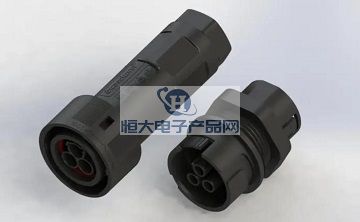Categorization:Product Information
Photovoltaic connector is a kind of electrical connector used in solar photovoltaic power plants to connect between solar panels and cables. Its main function is to transmit the DC power generated by the solar panel to the inverter or other electrical equipment, so as to realize the power output of the photovoltaic power plant. PV connectors play an important role in PV power stations, and their performance and quality directly affect the power generation efficiency and safe operation of PV systems. Therefore, PV connectors need to meet a series of standard requirements to ensure their reliability and stability. The following are some common PV connector standards: 1. IEC 62852:2014 "Photovoltaic connectors": This is an international standard for PV connectors issued by the International Electrotechnical Commission (IEC), covering technical requirements, test methods, marking and packaging of PV connectors. The standard is mainly applicable to connectors in solar photovoltaic power plants, and specifies its rated current, rated voltage, voltage resistance, protection level, weather resistance and other performance requirements.2. UL 6703A:2015 "Standard for Photovoltaic Connectors": this is the standard for photovoltaic connectors issued by U.S. Safety Laboratory (UL), mainly applicable to photovoltaic connectors in North America. It is mainly applicable to photovoltaic connectors in North America. The standard includes electrical and mechanical performance requirements for photovoltaic connectors, such as current capacity, voltage level, protection level, durability, fire resistance, etc. 3. TUV Rheinland TL 9000:2018 "Photovoltaic connectors for use in photovoltaic systems": this is the standard issued by TUV Rheinland. TUV Rheinland TL 9000:2018 "Photovoltaic connectors for use in photovoltaic systems": this is a standard for photovoltaic connectors issued by TUV Rheinland, which is mainly applicable to photovoltaic connectors in Europe. The standard specifies the technical requirements, test methods and safety performance of photovoltaic connectors to ensure the reliability and stability of photovoltaic connectors under different environmental conditions. 4. JIS C 60998-2-1:2008 "Low-voltage switchgear and controlgear - Part 2-1: Particular requirements for connecting devices as separate entities". Requirements for connecting devices as separate entities with screwless-type clamping units": This is a standard for photovoltaic connectors issued by the Japanese Industrial Standards (JIS) and is applicable to photovoltaic connectors in Japan. The standard specifies the technical requirements, test methods, and safety performance of PV connectors to ensure their quality and safety in the Japanese domestic market. The production process of photovoltaic connectors generally includes the following major steps: 1. Material Preparation: The production of photovoltaic connectors usually uses high-quality metal materials, such as copper, aluminum and so on. First of all, you need to carry out material procurement and inspection to ensure that the material meets the production requirements. 2. material processing: after material preparation, you need to carry out material processing. This includes material cutting, stamping, welding, drilling and other machining processes to obtain parts that meet the connector design requirements.3. Surface treatment: Connector parts usually need surface treatment to improve their electrical properties, corrosion resistance and mechanical strength. For example, parts can be tin-plated, nickel-plated, silver-plated and other surface treatment to increase its electrical conductivity and corrosion resistance.4. Assembly: after the surface treatment of the parts need to be assembled. This includes the assembly of different parts in accordance with the design requirements, including the assembly of connector shells, plugs, sockets, seals and other components.5. Inspection and testing: the assembled connector needs to be rigorously inspected and tested to ensure that its quality and performance in line with the standard requirements. This includes appearance inspection, dimensional measurement, electrical performance testing, voltage resistance testing, protection level testing, etc. 6. Packaging: Connectors that pass inspection and testing need to be packaged to protect the connectors from moisture, dust and physical damage. Packaging usually includes labeling, crating and marking of connectors.7. Quality Control: Strict quality control is required throughout the production process, including inspection of raw materials, monitoring of processing, inspection and testing of finished products, etc. This helps to ensure the production of high-quality, compliant connectors. This helps to ensure the production of high-quality, standardized PV connectors.

-About Evergrande Electronic Products Network platform related to the introduction and sales of products briefly: Evergrande Electronic Products Network - a professional agent / production / sales of a variety of {connectors | wiring harness | wire and cable products }; if you have a related [connectors | wiring harness | wire and cable products] procurement / purchasing needs or would like to buy / to understand which connectors | wiring harness | wire and cable products we can provide solutions, please contact the following Division I business personnel; if you have a related [connectors | wiring harness | wire and cable products] sales / resources and promotion needs, please click on the "¡¡ business cooperation ← with the person to discuss! If you have related [connectors | wire harness | wire and cable products] sales / resources and promotion needs, please click on the "¡¡ Business Cooperation ←" to discuss with a person!